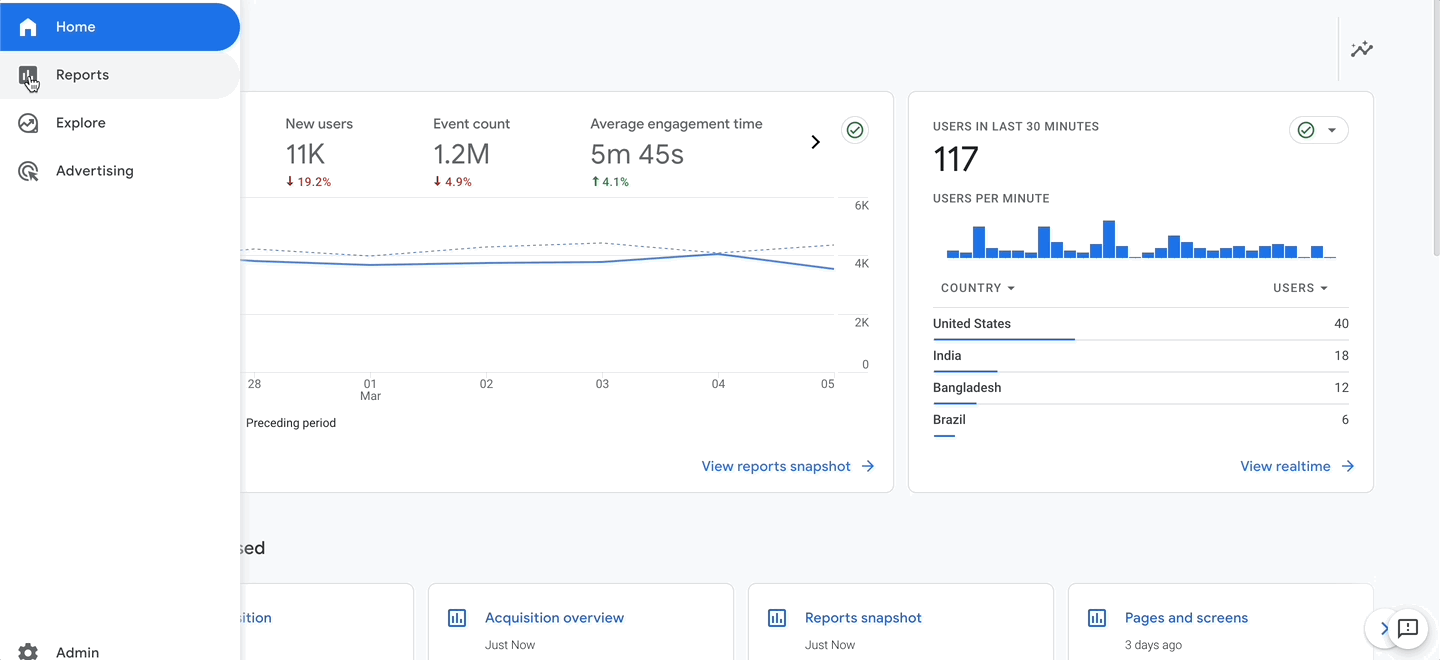Secondary Dimension in Google Analytics: Unlocking Advanced Metrics
Secondary Dimension in Google Analytics: Unlocking Advanced Metrics
Blog Article
Transform Your Analytics Strategy With Second Measurement in Google Analytics
By integrating secondary dimensions right into data analysis, a brand-new layer of understandings emerges, losing light on elaborate customer habits and interactions. The strategic application of additional dimensions holds the crucial to opening a treasure chest of very useful information that can revolutionize how services act and analyze upon their information.
Recognizing Secondary Dimensions in Google Analytics
Secondary dimensions in Google Analytics provide additional context to primary information by enabling individuals to examine metrics across a 2nd measurement, offering deeper insights right into individual habits and communications on a site. Secondary Dimension in Google Analytics. While main measurements offer fundamental data factors such as pageviews, bounce rate, and session period, secondary measurements offer a more comprehensive view by segmenting the main information additionally. This segmentation permits customers to analyze metrics in mix with one more dimension, such as web traffic resources, demographics, or customer habits
Advantages of Using Second Dimensions
Making use of second measurements in Google Analytics offers a tactical advantage by boosting the deepness of analysis and offering a much more comprehensive understanding of individual interactions and behavior on a website. By integrating second measurements, experts can acquire useful understandings into the performance of certain sectors or variables within their data. This enables a more detailed assessment of customer behavior past surface-level metrics, permitting a much deeper expedition of the variables influencing customer involvement and conversions.

How to Implement Additional Measurements
When including secondary measurements in Google Analytics, one essential step is to pick the relevant metrics and dimensions to improve the evaluation procedure. To implement secondary dimensions properly, beginning by accessing your Google Analytics account and navigating to the report you wish to enhance with extra information. As soon as in the record, situate the "Additional Dimension" button, usually discovered above the data table. Clicking on this button will certainly open a drop-down menu listing numerous measurements that can be included in your main dimension for much deeper insights.
After picking the proper second dimension, such as 'Source/Medium' or 'Tool Group,' Google Analytics will show the data in a much more detailed layout, allowing you to cross-analyze various facets of user actions. Keep in mind to trying out different combinations of key and secondary dimensions to reveal important patterns and fads that can educate your advertising and marketing methods. By executing second measurements thoughtfully, you can obtain an extra comprehensive understanding of your internet site or app performance and make data-driven decisions to maximize your electronic visibility.
Studying Information With Second Measurements
Boost your information evaluation in Google Analytics by integrating additional measurements to dig much deeper right into user behavior patterns and maximize your digital advertising strategies effectively - Secondary Dimension in Google Analytics. By adding secondary measurements to your main information, you can get valuable understandings that can aid you make educated choices regarding your web site or application efficiency
Evaluating information with additional measurements enables you to segment your main information better, offering a much more detailed sight of customer communications. Incorporating the primary measurement of 'source/medium' with a secondary dimension like 'touchdown web page' can disclose which certain web pages are driving traffic from different resources. This details can be crucial in refining this hyperlink your content method or enhancing your marketing campaigns to boost conversions.
Additionally, utilizing second dimensions allows you to determine correlations in between various metrics, helping you comprehend the influence of numerous factors on individual behavior. Whether it's examining demographics along with user engagement metrics or gadget categories with conversion rates, secondary dimensions encourage you to reveal hidden trends and patterns that can direct your advertising and marketing efforts.
Enhancing Performance With Additional Dimensions
To improve the efficiency of data analysis and decision-making in Google Analytics, integrating secondary dimensions is vital to enhancing efficiency metrics and acquiring much deeper understandings into user behavior patterns. By utilizing secondary dimensions, analysts can dive beyond surface-level data and discover valuable relationships that may otherwise go unnoticed. This optimization technique allows services to customize their advertising initiatives better, determine locations for renovation in internet site use, and boost total individual experience.
Additional dimensions provide a more thorough sight of customer communications by giving extra context to key data metrics. Pairing the main dimension of 'landing web page' with a secondary dimension like 'gadget category' can expose whether specific devices are extra likely to drive interaction on details landing pages. This understanding can educate responsive layout renovations or targeted advertising and marketing approaches to improve performance.

Conclusion
Finally, the combination of second dimensions in Google Analytics supplies organizations with an effective tool to boost their analytics method. Secondary Dimension in Google Analytics. By delving deeper right into customer actions and communications, marketers can discover important understandings that can drive efficiency optimization and enhance the site overall customer experience. Leveraging second measurements permits an extra detailed analysis of information, bring about even more informed decision-making and tailored advertising efforts
Secondary measurements in Google Analytics offer extra context to main information by allowing users to examine metrics throughout a 2nd measurement, using deeper understandings into user actions and communications on a click here for more site. While main measurements give fundamental information factors such as pageviews, bounce price, and session duration, additional dimensions use a more detailed view by segmenting the key information better.One of the crucial advantages of using additional dimensions is the capacity to discover connections and patterns that may not be immediately noticeable when assessing data with key measurements alone.When incorporating secondary measurements in Google Analytics, one important step is to choose the pertinent metrics and measurements to enhance the analysis procedure. Coupling the main measurement of 'landing page' with a second dimension like 'gadget category' can disclose whether particular devices are more likely to drive interaction on certain landing pages.
Report this page